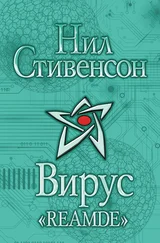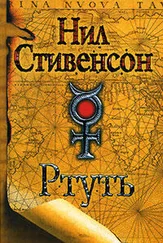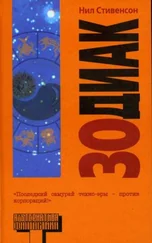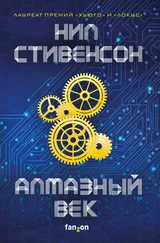The deck concluded with an image of two strapping Indian men—one Sikh, the other not—striking heroic poses atop a glacier, crossing their sticks in a big X against the dark blue sky.
The lights came up and a woman wearing an ankle-length puffy coat over a sari came in, followed by a uniformed soldier pushing a cart laden with sticks and stones. The lady gave a talk, much more interesting to Laks than any PowerPoint, about what was and wasn’t acceptable. People were always trying to bend the rules. Sticks could be as big and heavy as you liked, but they could not have any metal attachments or anything whatsoever grafted onto them that could make a penetrating or cutting wound. Any sort of wood was allowable provided it was not liable to break off in a way as to form a sharp point. She held up a cheap pinewood closet pole such as you might buy at a home improvement store. It had fractured along an angled grain boundary to become a sharp spear. Other exhibits—baseball bats with protruding nails, cricket bats with attached blades, sword canes—were more blatantly against the rules, but fun to look at.
Less information needed to be imparted to the rock throwers (“rockers”) since there was only so much you could say about rocks. They did actually need to be rocks, locally sourced. Some mischief-makers had tried to smuggle in eggs made of lead. You were not allowed to use slings or atlatl-like arm extenders. You had to throw the rock from your hand with a normal baseball- or cricket-like motion. As a way of driving the point home, the soldier took up a position about ten meters away from a sheet of plywood, very much the worse for wear, and used a sling to hurl a lead egg at it. The egg punched a neat hole right through the plywood. “Of course the rules apply on both sides of the Line,” the lecturer said, “and that is where you, our intrepid streamers, have your role to play. Keep a sharp eye on our adversaries! If you collect any footage of Chinese volunteers transgressing these strict rules, upload it at once, timestamped and geotagged, to our server.”
There followed the quiz, which was not all that difficult, and then a strip search and collection of blood and saliva samples. They were strangely uninterested in seeing anyone’s official papers. Bella, a couple of days ago, had suddenly looked up from a screen and remarked, “It’s like the French Foreign Legion.” Laks hadn’t known what she’d meant by that. But now he got the gist. They didn’t care who you were or where you came from. They just wanted the biometric data and then to shoot a chip into your arm.
In due course Laks was reunited with his clothing and personal effects. He’d removed everything except his patka—the base layer of a proper turban. Many days he didn’t bother to wear anything more than that on his head. But he was aware that he was being shunted into a separate lane, as it were, for Sikhs. So he pulled a long piece of fabric out of his bag and devoted a few minutes to wrapping his head in a full dhamala, which was a style of turban associated with going into battle. Down low it was close to the sides of the head, but a lot of material was piled up above, making it flare wider as it rose above the top of his skull. It added a couple of inches to his height.
Once he was fully dressed, he and other observant Sikhs were taken aside and given a stern talking-to by an officer about their kirpans: the daggers worn by all Sikhs as emblems of their faith and of their status as saint-soldiers. All other knives had been confiscated, but Sikhs could carry their kirpans under a religious exemption on the condition they never draw them from their sheaths—no, not even in a fight.
Their luggage was waiting for them on the other side of all these barriers, and it was clear that it had been rifled by clinically paranoid officials. Vehicles were not allowed to cross over—it would have been too difficult to inspect those for concealed weapons—and so once they had repacked their bags they found themselves wandering around an open-air bus bazaar where scores of vehicles ranging from motorized rickshaws up to full-sized buses were competing for passengers.
But Sue had already identified a place along the south shore of the Pangong Tso where a new unit of Chinese volunteers calling themselves the Bonking Heads had been posting high-spirited videos within the last twenty-four hours. While their visual flair was undeniable, they were far from the most impressive such group. For that reason, though, they seemed a wise choice for a Fellowship untried in combat. Ravi had arranged a ride on a specific minibus. All they had to do was walk to it and climb on board.
The bus worked its way down the inevitable switchbacks, and after an hour made contact with the dirt track that ran parallel to the southern shore of the lake. From there it was reasonably easy going on a flat road. Laks was actually able to just look out the window and observe the scenery. The Pangong Tso reminded him of some of the long, deep glacier-gouged lakes in the Selkirk Range of British Columbia, such as Kootenay. The key difference was that the latter was surrounded by hills green and rich in wildlife, because its altitude was all of about five hundred meters. Whereas Pangong Tso—a bit high at the moment because the glaciers feeding it were succumbing to global warming—was at 4,250. And it was salt water, because it had no outlet and so was just a big evaporation basin. The upshot was that it was as lifeless as the moon. Neither the rocky slopes rising from its shores nor the transparent blue water itself supported any kind of plant or animal that Laks could see. Every few kilometers they would pass a military supply depot (neat grids of tents and shipping containers) or a volunteer logistics hub (smoking, steaming chaos of tarps and vehicles) but humans, supported by long supply chains, were the only life-forms up here.
He forgot where he was and dozed off. But suddenly the bus had stopped. “There!” said the driver in English, pointing out the window on the other end of the dashboard. But the salt-rimed glass was impossible to see through with late-afternoon sun crashing into it. Laks got up, pulled his bag and his stick down from the overhead luggage rack, and walked down the bus’s side stairway until his feet were on solid ground: bouldery dirt, streaked with white salt.
A rock about the size of an egg came bouncing and tumbling across the ground toward him, as if in greeting, and came to rest a couple of meters away from his foot. Odd. Laks turned in the direction from which it had flown and looked across fifty meters of open ground into the People’s Republic of China.
The Bonking Heads were standing there, drawn up in a sort of battle line, flanked by their goggle-wearing, drone-piloting streamers, picking up rocks and desultorily throwing them. But the bus driver had been wise enough to stop just out of range, to spare his windows.
In homage to a late-twentieth-century rock group, the Bonking Heads wore black dress suits over their voluminous down-stuffed under-layers. The suits were tailored after normal business attire but comically oversized to make room for all that insulation. They were neatly accessorized with white shirts and narrow black neckties. Having perceived the futility of throwing rocks from this distance, they were now just brandishing sticks and shouting imprecations. Some of them were striking wide-based martial stances that Laks vaguely recognized as characteristic of northern kung fu styles. They would be able to develop a lot of power, but their legs were vulnerable. Others of the Bonking Heads seemed to have noticed his turban, for they had begun prancing around in what was apparently meant as a cruel parody of gatka footwork. At a glance, he thought there were maybe four of those preening stick fighters, flanked by a total of half a dozen or so rockers.
Читать дальше

![Нил Стивенсон - Криптономикон [litres]](/books/23868/nil-stivenson-kriptonomikon-litres-thumb.webp)







![Нил Стивенсон - Лавина [litres с оптимизированной обложкой]](/books/414066/nil-stivenson-lavina-litres-s-optimizirovannoj-ob-thumb.webp)
